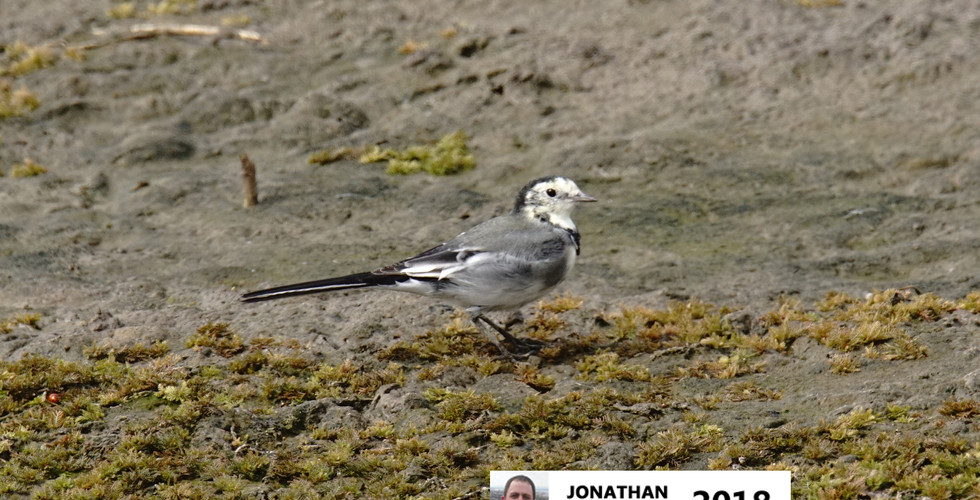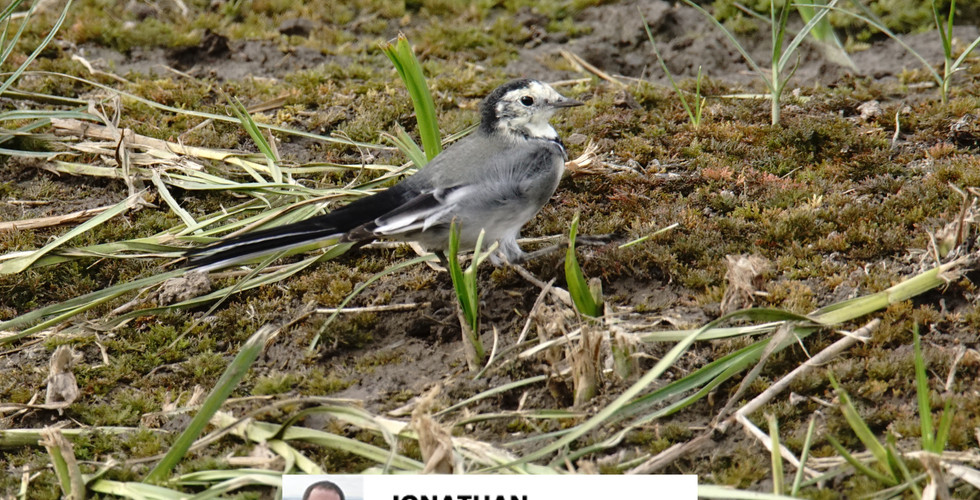DEATH BY PEREGRINE @ BLACKTOFT SANDS
- Jonathan Marshall
- Aug 29, 2018
- 5 min read

On Wednesday I visited RSPB Blacktoft Sands which is located on the south banks of the River Ouse just before it merges with the River Trent to become the Humber a few miles east of Goole. The reserve was opened by the RSPB in 1973 and the reserve's tidal reedbed is the largest in England. Blacktoft Sands star species include Avocets, Bearded Tits, Bittern, Hen Harrier and Marsh Harrier. In 2015 and again in 2017 one of the UK's rarest birds of prey, the Montagu Harrier, nested at the site.
It was a cloudy but warm day when I arrived at Blacktoft Sands and washing themselves at the edge of a pond, next to the car park, were a pair of Blue Tits, Robin and a Dunnock. I walked along the path to the Reception Hide and as I passed the feeders I could see Tree Sparrows and Chaffinches visiting and perched on the top of a large bush was a lone Reed Bunting. After a quick visit to the Reception Hide to check the sightings book I headed along the path west towards the Marshland Hide.
The path made a slight detour through the tall grass due to one of two active wasp nests close to the path. I walked past the Xerox Hide and arrived at the Marshland Hide where on an island about one hundred yards away was a group of about thirty Dunlins and a dozen Lapwings. On the water there were several Gadwalls and a single Avocet was wading through the water looking for food whilst its partner was asleep on an island.

Over on the far right hand side there was a pair of Snipes sat amongst the grass and a few minutes later a Wheatear flew in and landed on the mud at the edge of the water a little bit near to the hide. After about a quarter of an hour a Roe Deer burst from the reeds to the right of the hide and ran across the grass bank in front of the hide. The Roe Deer stopped short of the bushes over to the left of the hide and a few seconds later another Roe Deer emerged from the reeds on the right. It galloped across the front of the hide and joined its friend and they both disappeared into the bushes.
The Wheatear now flew across the water and landed on an island to the left of where the Dunlins and Lapwings were busy snoozing. Suddenly a Peregrine Falcon flew down at a tremendous speed and attacked the Dunlins with brute force causing all the birds to scatter. The Peregrine circled round and dropped down and picked up the Dunlin it had killed from the water. It then flew off towards an electricity pylon with its catch and as I looked back at where the Dunlins had been I noticed that sadly another Dunlin had been killed as its lifeless body floated in the water.
I now left the hide and walked back along the path towards the Xerox Hide which was very quiet apart from a couple of Snipes hiding amongst the tall grass. A couple of minutes later a small group of Dunlins flew past the hide and headed back to the water where they were before the Peregrine attack. A few minutes later I left the hide and I would have headed for the Ousefleet Hide but it was currently closed due to maintenance work so I continued on past the Reception Hide to the First Hide.
From this hide I could see a Little Egret and a Greenshank at the far side of the water, just in front of the reeds. Nearer the hide, wading through the middle of the water was a single Black Tailed Godwit and over to the right there were a few Gadwalls and a couple of Moorhens. I left the hide and headed along to the next hide which is called the Townend Hide which was much busier than the previous two hides. There were plenty of Lapwings present as well as a couple of Redshanks and a trio of Green Sandpipers.

A pair of Ruffs now flew in over the reeds, with one landing on an island and the other landing between two Green Sandpipers on the left hand side. Next to arrive was a Grey Heron as it flew low over the reeds from the right and landing on the near left hand side and then giving its feathers a good shake before wandering over to the reeds on the left. A minute or so later another Grey Heron flew in and landed on the right hand side, about half way up the lagoon but it flew off a few minutes later.
I had another look at the islands at the back end of the lagoon and several Snipes had now arrived and the two Ruffs had disappeared. I moved on to the final hide which is the Singleton Hide and from here I could see the large group of Dunlins had settled on the far side of the water in front of the reeds. Over to the right there were more Dunlins as well as several Snipes, Black Tailed Godwits and Moorhens. Down a channel leading away from the lagoon at the far left hand side I could see another Grey Heron and a few Gadwalls.
There was a small gap in the reeds further round to the right from the other one and creeping out was a Water Rail. It scampered across the gap and into the reeds at the other side and out of sight and at this point I noticed a Buzzard in the distance. It was soaring over the banks of the River Ouse slowly getting closer but it then seemed to disappear into the reeds.

I decided to walk back along the path and visit the first hide that I had visited when I arrived, the Marshland Hide. The water was fairly quiet with just a couple of Moorhens and the pair of Avocets still present. After couple of minutes a trio of Pied Wagtails flew in from the reeds and landed on the island where the Dunlins had been before the Peregrine attack. A few minutes later they flew across the water right at the hide and landed on the bottom of the grassy bank just in front.
They stayed for several minutes before flying off only to return a few minutes later with three more taking the total number present to six. Again after a couple of minutes they flew over to the grassy bank just in front of the hide and moved along the mud at the bottom for a few minutes before flying off. I now walked back to the car and as I reached it the Buzzard now flew overhead circling the car park as I headed home.
I have attached a few pictures and a full sightings list from my visit to RSPB Blacktoft Sands.






















































Comments